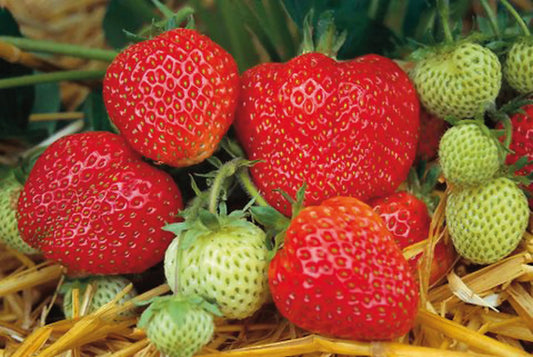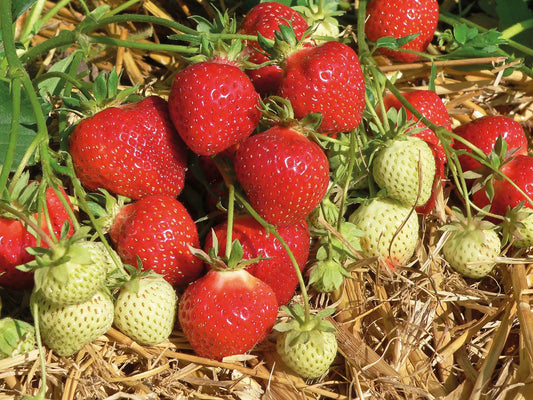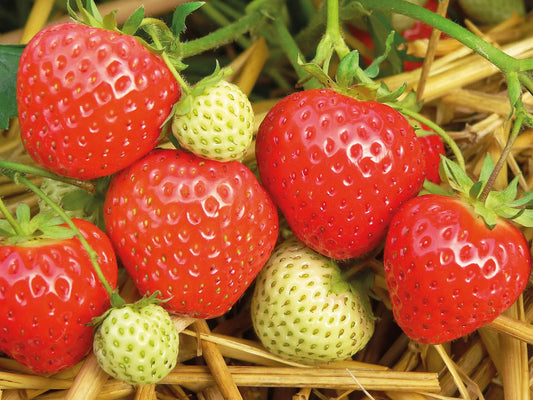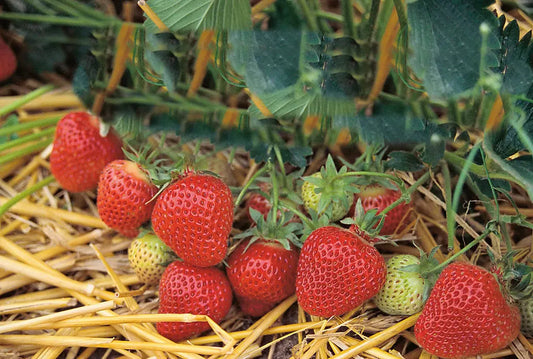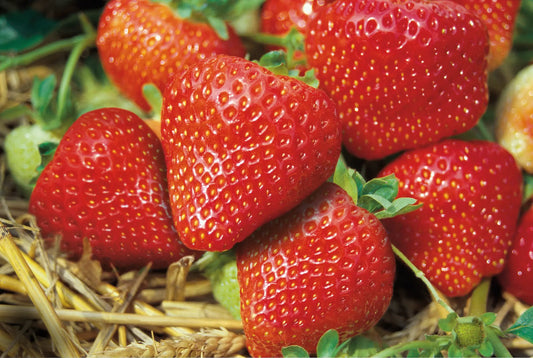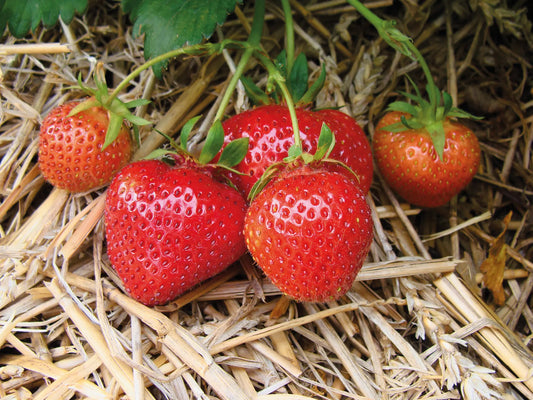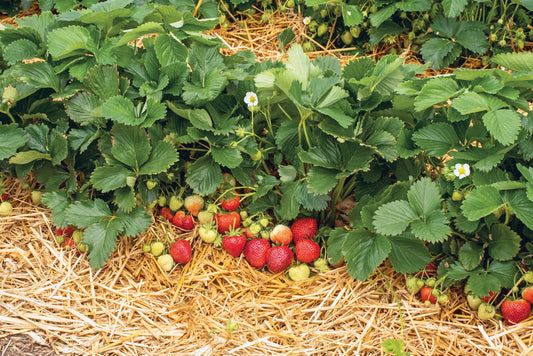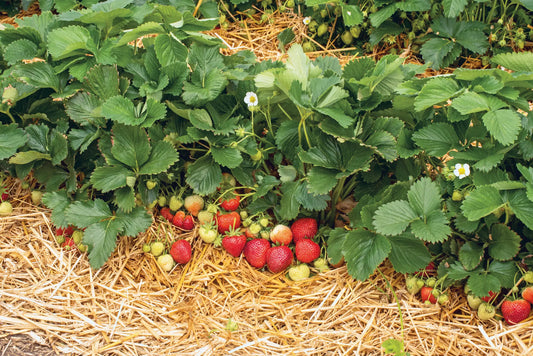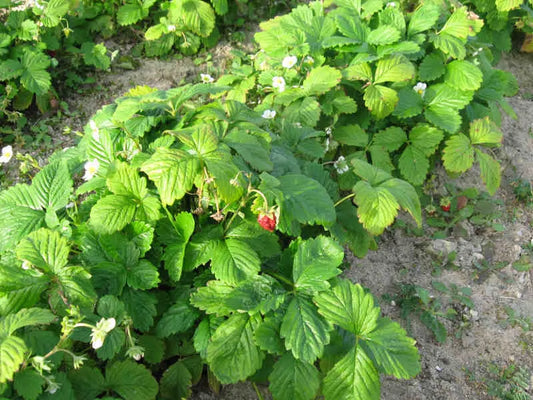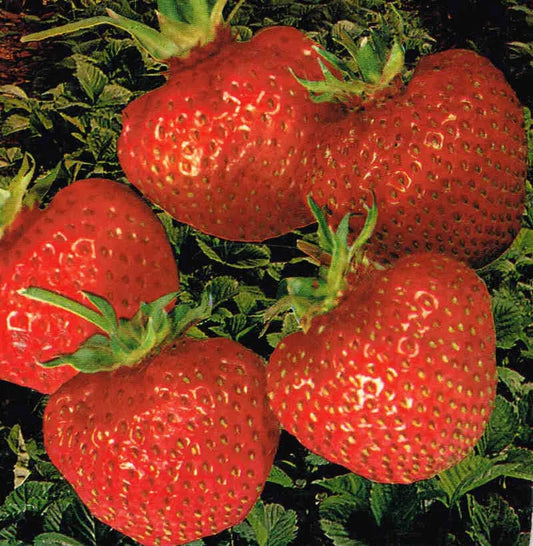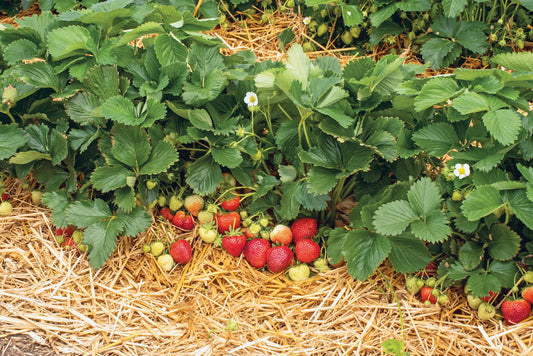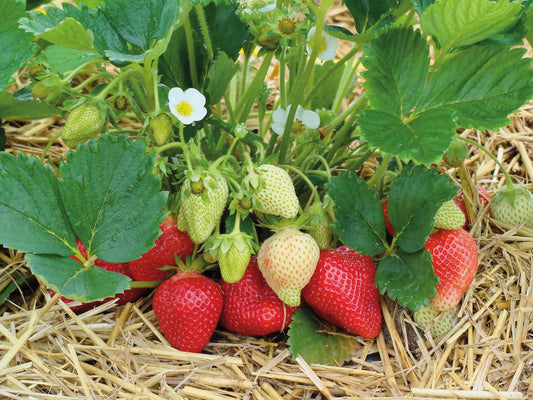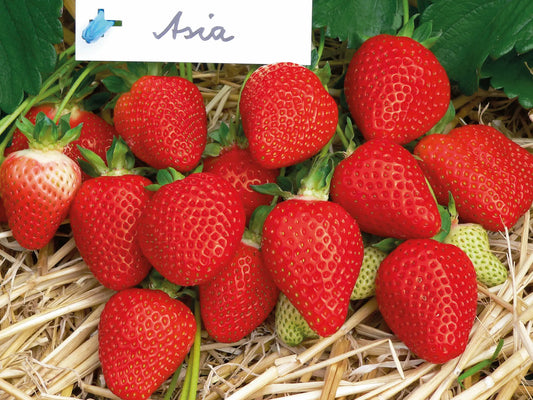-
Delivery from 10 plants to France, Switzerland and Europe
Delivery method -
Strawberry Plant Wholesale Supplier
About Us -
Quality Strawberry Plants
Strawberry technical itinerary -
Secure payment
Our Payment Terms
Technical Guide for Growing Strawberries from Fresh Bare-Root Strawberry Plants
Definition and technical itinerary for growing fresh bare-root strawberry plants
Growing strawberries is a subtle art that requires technical mastery at every stage, especially when it comes to fresh, bare-root strawberry plants. These plants are unique in that they require meticulous attention to ensure they thrive and produce abundant, delicious fruit. In this article, we'll explore each phase of growing them, from receiving the plants to harvesting, including daily care and best practices.
Bare-root strawberry plants are distinguished by their lack of substrate around the roots. This makes them both economical and more difficult to handle. Unlike plug plants, these plants must be planted quickly after receipt. They require a strict technical process to ensure good rooting, optimal development, and a satisfactory harvest. Following the steps detailed here will maximize your chances of success.
Production Calendar - Fresh Bare-Root Strawberry Plants

Fresh Bare-Root Strawberry Plants: Definition
Fresh bare-root strawberry plants are cuttings that do not yet have a well-developed root system. They are harvested in the height of summer, usually between early and mid-July. Unlike other types of plants such as those in plugs or trays, these plants are shipped directly after harvest, without a protective substrate around the roots. They often come in bundles, ready to be planted upon receipt.
This type of plant is widely used in large-scale cultivation due to its low cost. However, this initial savings comes with a trade-off: bare-root strawberry plants require special attention, particularly in terms of hydration and establishment in the soil.
Reception and preparation of plants
The first step in successfully growing strawberries from bare-root plants is careful preparation upon arrival. Unlike other types of plants that can be stored for a few days before planting, fresh bare-root strawberries must be planted immediately to avoid dehydration or deterioration.
- Plant immediately : Once the plants arrive, it's essential not to waste any time. Their bare-root nature makes them particularly vulnerable to dehydration, so they must be planted without delay.
- Rehydrate the roots : Before planting, soaking the roots in water for about 15 minutes helps rehydrate them and facilitate their recovery. This step is essential to reduce post-transplant shock.
- Pruning roots and leaves : If the roots are too long, they should be pruned to a length of about 10 cm from the root collar. It is also advisable to partially cut off large leaves to limit evaporation while preserving the heart leaves, which are vital for future growth.
Ground preparation
Choosing the right soil and preparing it are crucial steps to maximize your chances of success. Strawberry plants, especially bare-root plants, are demanding in terms of soil conditions and sun exposure.
- Choosing a location : Strawberries need plenty of light. Choose a sunny location where no strawberries have been planted for at least two years to avoid soil-borne diseases. Large-fruited varieties, in particular, require direct sunlight to produce quality fruit.
- Tillage : The soil should be worked to a depth of 20 to 30 cm, either by digging it manually or using a tiller. This operation helps aerate the soil and eliminate weeds, which are essential for the proper growth of strawberry roots.
- Enrich the soil : Incorporating well-rotted compost is necessary to improve soil structure and increase its fertility. Strawberries thrive in soil rich in organic matter, which allows for better water retention without becoming soggy.
- pH Adjustment : A pH between 5.8 and 6.2 is ideal for strawberries. If the soil is too acidic or alkaline, nutrient absorption is compromised, which can affect plant health and production. Use a pH tester to adjust soil acidity if necessary.
- Creating mounds (optional) : If your soil is particularly wet, creating mounds of 10 to 20 cm can promote drainage and thus prevent root asphyxiation. This technique also allows for better soil warming, which is beneficial at the start of the season.
Planting fresh bare-root strawberry plants
The actual planting of bare-root plants must be carried out in accordance with specific rules.
- Planting Time : The best time to plant bare-root strawberries is between late July and early August. This period, although warm, is ideal for promoting rapid rooting before the arrival of winter.
- Spacing : Strawberry plants must be spaced properly to promote good air circulation and limit disease. Plants should be spaced 30 to 45 cm apart in a row and 90 to 120 cm apart between rows.
- Planting depth : Plant strawberries so that the root collar is just above the soil line. If the roots are buried too far, they may rot; if they are too exposed, they will dry out.
- Thorough watering : After planting, generous watering is essential to moisten the soil around the roots. This helps the plants establish quickly.
Caring for fresh bare-root plants
Post-planting care is especially important for bare-root plants, as they are more sensitive to environmental conditions.
- Regular watering : Bare-root strawberries require constant watering, especially during hot weather. The soil should remain moist, but not soggy. Watering frequency will depend on the weather and soil texture, but regular monitoring is imperative.
- Fertilization : Adding a balanced fertilizer rich in phosphorus and potassium is recommended after flowering to promote fruit growth. However, over-fertilization can be harmful to plants, so follow the recommended dosages.
- Mulching : To retain soil moisture and limit weed growth, mulching is highly recommended. Organic mulch such as straw or plastic mulch can also protect fruit from direct contact with the soil, thus limiting the risk of rot.
- Disease and pest control : Strawberry plants are susceptible to various diseases such as botrytis and powdery mildew, and pests such as aphids and weevils. Regular monitoring and the application of preventative or curative treatments are essential to protect your plants.
Strawberry harvest
After a year of hard work, the long-awaited harvest time arrives. Bare-root plants, although demanding in terms of care, allow for an early harvest the following year.
- Harvest time : Strawberries from bare-root plants are generally ready for harvest between mid-May and mid-October, depending on the variety planted and weather conditions.
- Harvesting at maturity : Strawberries should be picked when they are fully red, shiny, and fragrant. It is important not to pick them too early, as they will not ripen further after harvest.
- Careful handling : Strawberries are fragile fruits. Careful handling is essential to avoid injury that would shorten their shelf life.
FAQ
What are the advantages of bare-root strawberry plants over plug plants?
Bare-root plants are generally less expensive and allow for larger-scale planting. However, they require more careful care, especially when it comes to watering and rooting.
How to prevent dehydration of bare-root strawberry plants?
Regular watering and mulching are the best solutions to maintain a good level of moisture in the soil and prevent the roots from drying out.
What type of soil is best for growing strawberries?
Strawberries prefer slightly acidic, well-drained soil rich in organic matter. Soil that is too wet or poorly drained can lead to root rot.
When should you fertilize strawberry plants?
Fertilization should be done after flowering, with a balanced fertilizer rich in phosphorus and potassium to promote fruit formation.
How do I protect my strawberry plants from pests?
Use netting or organic treatments to control pests. Monitor your plants regularly and apply preventative treatments against diseases such as botrytis.
Why is it recommended to create mounds for strawberry plants?
Mounds allow for better drainage in wet soils and improve air circulation, reducing the risk of root rot and disease.
Conclusion
Growing strawberries from fresh bare-root plants may seem complex, but with proper preparation, attention to detail, and consistent care, it can yield bountiful harvests. While these plants require increased vigilance, particularly in terms of moisture and soil management, they offer an economical and productive option for both professional and amateur growers. Following this technical approach will guarantee you healthy strawberry plants capable of producing abundant and tasty fruit.
Fraisiverse - Your supplier of quality strawberry plants. Organic or conventional. Delivery throughout France. Wide range of strawberry plants: Tray Strawberry Plants, Motte Strawberry Plants, Frigo Strawberry Plants, Waiting Bed Strawberry Plants. Strawberry plants for professional and private strawberry growers
Our Fresh Bare-Root Strawberry Plants
-
Elsanta Fresh Bare-Root Strawberry Plant
Regular price €0,17 EURRegular priceUnit price / per -
Honeoye Fresh Bare-Root Strawberry Plant
Regular price €0,17 EURRegular priceUnit price / per -
Korona Fresh Bare-Root Strawberry Plant
Regular price €0,17 EURRegular priceUnit price / per -
Lambada Fresh Bare-Root Strawberry Plant
Regular price €0,17 EURRegular priceUnit price / per -
Polka Fresh Bare-Root Strawberry Plant
Regular price €0,17 EURRegular priceUnit price / per -
Elegance Fresh Bare-Root Strawberry Plant
Regular price €0,18 EURRegular priceUnit price / per -
Florence Fresh Bare-Root Strawberry Plant
Regular price €0,18 EURRegular priceUnit price / per -
Salsa Fresh Bare-Root Strawberry Plant
Regular price €0,18 EURRegular priceUnit price / per -
Sonata Fresh Bare-Root Strawberry Plant
Regular price €0,18 EURRegular priceUnit price / per -
Belrubi Fresh Bare-Root Strawberry Plant
Regular price €0,18 EURRegular priceUnit price / per -
Earliglow Fresh Bare-Root Strawberry Plant
Regular price €0,18 EURRegular priceUnit price / per -
Elsanta Fresh Bare-Root Strawberry Plant
Regular price €0,18 EURRegular priceUnit price / per -
Favette Fresh Bare-Root Strawberry Plant
Regular price €0,18 EURRegular priceUnit price / per -
Gariguette Fresh Bare-Root Strawberry Plant
Regular price €0,18 EURRegular priceUnit price / per -
Gorella Fresh Bare-Root Strawberry Plant
Regular price €0,18 EURRegular priceUnit price / per -
Korona Fresh Bare-Root Strawberry Plant
Regular price €0,18 EURRegular priceUnit price / per -
Mme Moutot Fresh Bare-Root Strawberry Plant
Regular price €0,18 EURRegular priceUnit price / per -
Pajaro Fresh Bare-Root Strawberry Plant
Regular price €0,18 EURRegular priceUnit price / per -
Reine des Vallées Fresh Bare-Root Strawberry Plant
Regular price €0,18 EURRegular priceUnit price / per -
Senga Sengana Fresh Bare-Root Strawberry Plant
Regular price €0,18 EURRegular priceUnit price / per -
Surprise des Halles Fresh Bare-Root Strawberry Plant
Regular price €0,18 EURRegular priceUnit price / per -
Talisman Fresh Bare-Root Strawberry Plant
Regular price €0,18 EURRegular priceUnit price / per -
Vicomtesse Héricart de Thury Fresh Bare-Root Strawberry Plant
Regular price €0,18 EURRegular priceUnit price / per -
Alba Fresh Bare-Root Strawberry Plant
Regular price €0,19 EURRegular priceUnit price / per -
Asia Fresh Bare-Root Strawberry Plant
Regular price €0,19 EURRegular priceUnit price / per


